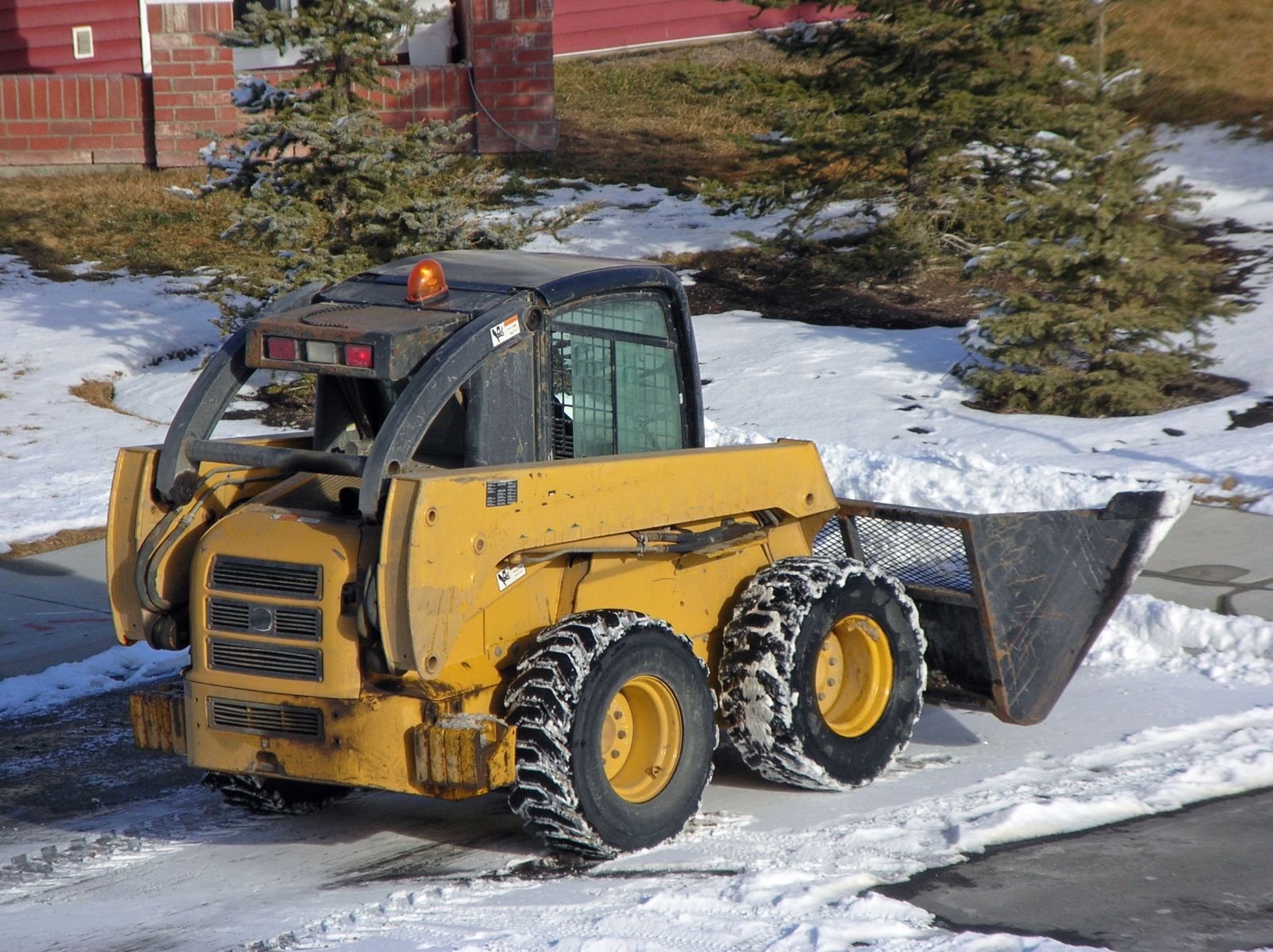What Are the Best Skid Steer Tires for Snow and Mud?

Wintry conditions are always tricky for any machine. Not only do the systems tend to get cold but there is also a lot of horsepower needed for the operation. Much as power is relatively easy to produce, maximum traction may not be as easily achievable. Especially, when you do not have appropriate tires to cut through the snow and grip the plowing surface.
You need tires with the proper tread pattern and a well-designed rubber compound to operate effectively in snowy weather. Today, we will talk about all the factors that the operator must consider while choosing the best skid steer tires for snow.
Which skid steer tires are good for snow?
According to some experts, the best skid steer tires to use in snowy conditions are pneumatic tires. Air filled tires work perfectly on flat surfaces such as parking lots. Pneumatic tires can withstand loose items under the snow without damage. They also have a large tread that makes them perfect for use in snowy weather.
While choosing good tires for snow an operator should consider three main factors:
- Tire Compound - rubber compounds should allow for flexibility even in the lowest temperatures. Thanks to that your skid steer will have great traction in snow.
- Tread Pattern - the tread pattern of snow tires must be aggressive to provide adequate grip on the plowing surface. Otherwise, the skid steer’s performance will be compromised as improper tires will cause short pushes and spinning, not to mention the operator’s frustration.
- Width - narrow tires will significantly speed up the process of snow removal. Such a tire base provides more ground pressure and easier maneuverability.
Other considerations
Apart from the three main characteristics that make good snow tires, there are other factors operators should consider when choosing snow tires for their skid steers.
Size
Depending on the manufacturer, you can get different sizes of skid steer tires for snow. The most common narrow tire sizes are 10×16.5, 12×16.5, and 14×17.5. However, the narrower the tire while still have the correct weight capacity for your machine will work best.
Weight
Skid steer snow tires weigh roughly the same as normal r4 tread skid steer tires. Depending on the size of the tire, they can weigh up to 1000 pounds.
Using track
Many wonder whether using a track is the right approach to operation in snow. The answer is sometimes. It depends on the application. If you are plowing snow, in most cases a good snow tire will outperform a track machine. If you are doing any other work, tracks will give you more traction and floatation to get through deep snow. Due to the need for extreme traction, using a track boosts productivity and provides greater operator safety. When it comes to the recommended tracks, a terrapin track or a TDF multibar rubber track provides a larger area of linear tread edges that enable to grip ice and snow.
Using chains
It is possible to use chains on tracks in snowy conditions. However, we do not recommend such a solution. Using chains on general skid steer tires can damage the surface that is covered by the snow. It will also decrease the operator’s comfort of the ride, as the road will feel bumpy. Finally, the chains are not very durable so they will break after a few uses. Altogether, the disadvantages outweigh the advantages in the form of greater traction.
Durability
Luckily, you can use one set of skid steer tires for a few seasons. Of course, provided you use them and care for them wisely. With less spinning than the regular tires, snow tires have a better grip and traction. Ultimately, it means less frequent replacements. It is also not advisable to use snow tires throughout the whole year to aid their effectiveness.
Cost
This factor depends on the manufacturer and supplier. However, it is safe to assume that good tires for snow will cost between $1500 and $4000 or even more per set.
When should you replace skid steer snow tires?
Many operators struggle with determining the right time to change the tires. If you notice the below signs, your skid steer tires most likely need replacing:
- Cracks and signs of damage - cracked tires, chunks that are missing, or damaged tread are some of the best indications of tires needing replacement.
- Thinner tread depth - if 80%-85% of the original tread is gone, it is the right moment to replace your tires.
- Uneven wear – sometimes the front and back tires of your skid may steer wear at a different pace. In such a situation, when the wear is not significant, it is a good idea to perform a tire rotation.
Best skid steer tire brands
The price and quality of skid steer tires also greatly depend on their producer. Skidsteers.com offers a full line of skid steer tires from many different skid steers, such as Bobcat, Case, CAT, John Deere, and many more.
Get your skid steer tires for snow from your trusted supplier
We not only offer snow tires but also other tires for multiple applications, e.g. dirt tires, asphalt, and concrete tires, or turf tires. Our shop also carries metal over tire, and rubber over tire tracks providing great traction and flotation.
Finally, our selection also includes rims or steel wheels which reduce the possibility of downtime, and tire chains for extra traction in snow and mud. Get in touch with our customer service team if you need advice on the best tires and parts for your machine.